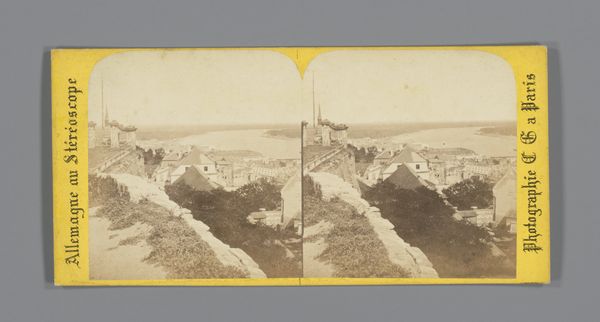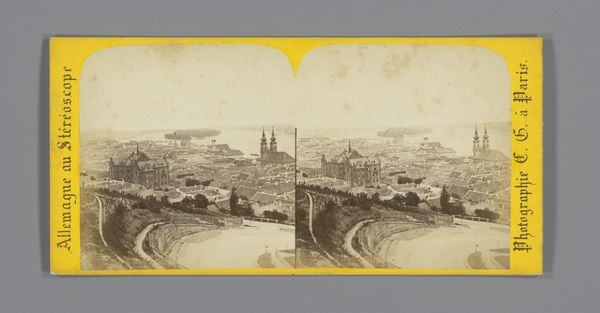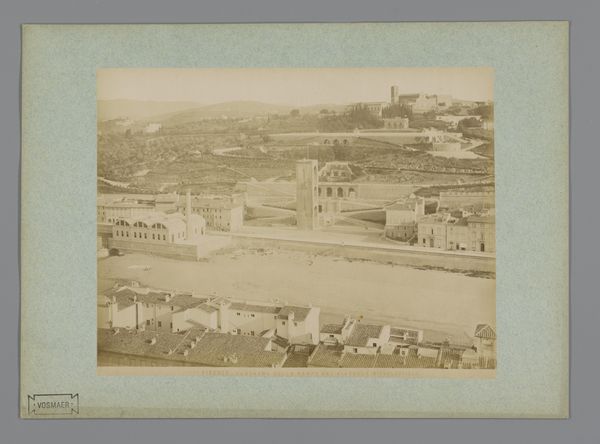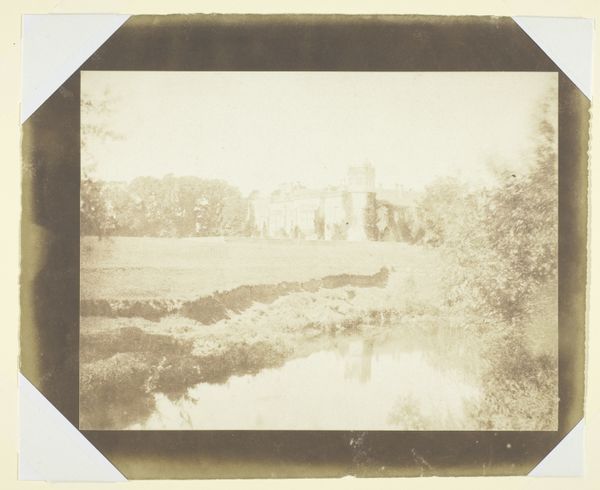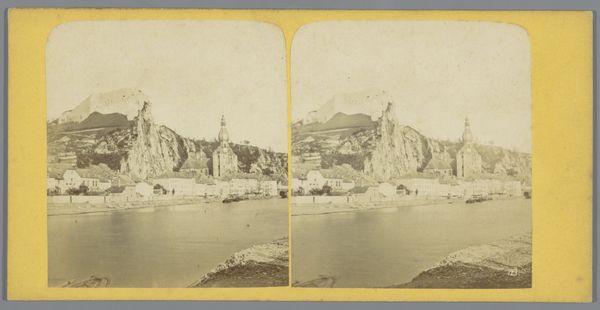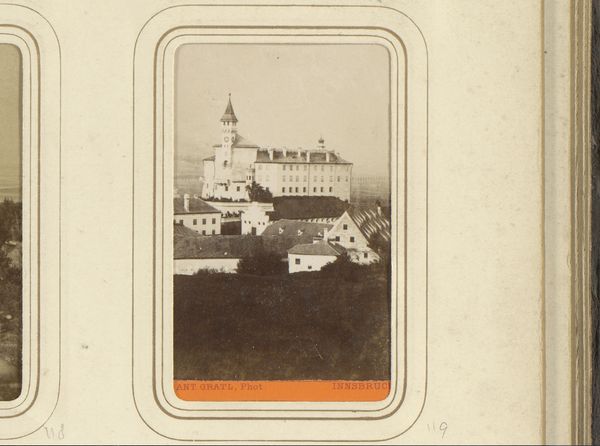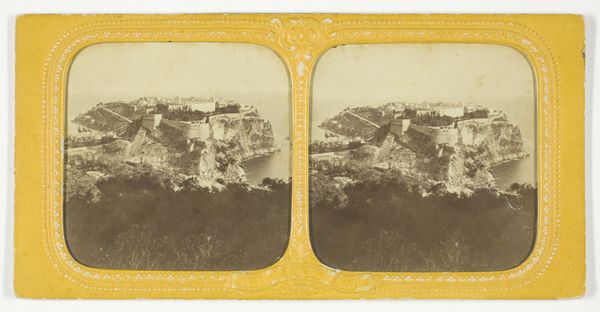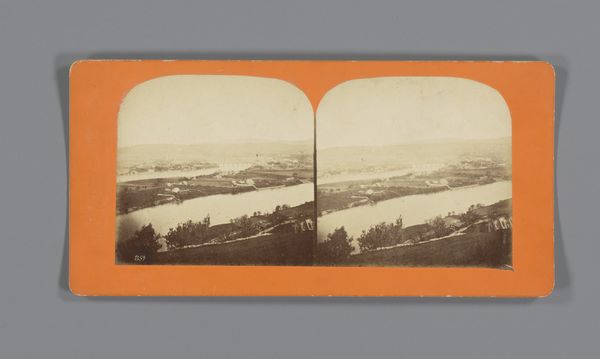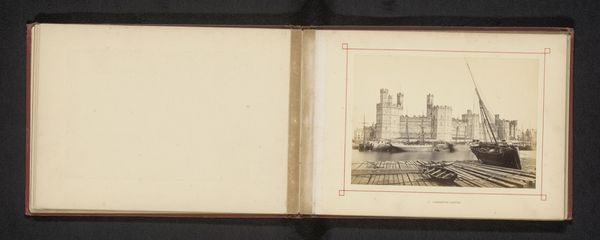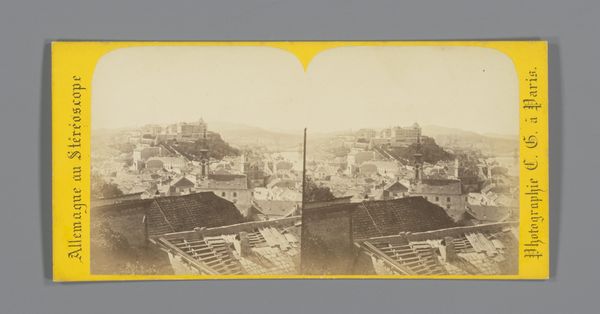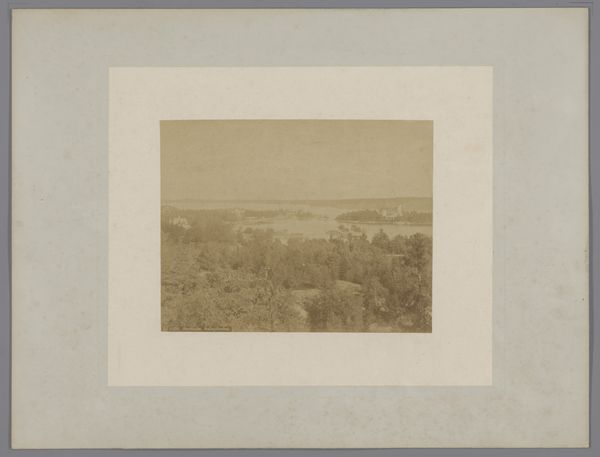
photography, albumen-print
#
landscape
#
photography
#
cityscape
#
albumen-print
Dimensions: height 93 mm, width 143 mm
Copyright: Rijks Museum: Open Domain
Editor: So, this albumen print photograph, “Gezicht op het Slot Stolzenfels en de Rijn,” was taken by Johann Friedrich Stiehm around 1878-1879. There’s something quite haunting about the way the castle just looms there, presiding over the landscape. How do you interpret the impact of Stiehm’s choices here? Curator: Consider how the image marries romanticism with a documentary impulse. The castle, Stolzenfels, becomes more than just architecture; it is a signifier of power, of history etched into the Rhineland. Note how it rises so boldly along the Rhine. Editor: I see it. It feels almost deliberately imposing, doesn't it? Like the photographer is consciously trying to invoke certain feelings or ideas about the place. Curator: Precisely. Photography at this time was often about capturing not just the visual reality but the emotional weight of a subject. The misty quality further romanticizes the scene. Consider the way light interacts with form here: does it evoke a particular emotional state for you? Editor: Definitely a sense of nostalgia. And the contrast – the castle sharp and clear against the soft background – makes me feel a sense of enduring legacy, something lasting. Curator: Yes, a calculated manipulation of visual cues intended to embed the castle within a grander narrative. The visual weight carries cultural memory, shaping how viewers then and now perceive the Rhine and German heritage. It is a photograph but so very much more. Editor: I never considered how a landscape photo could be so deliberate in shaping a narrative. I'll look at images differently now. Curator: Every choice, even in seemingly objective documentation, holds symbolic weight. It is fascinating, isn't it?
Comments
No comments
Be the first to comment and join the conversation on the ultimate creative platform.
